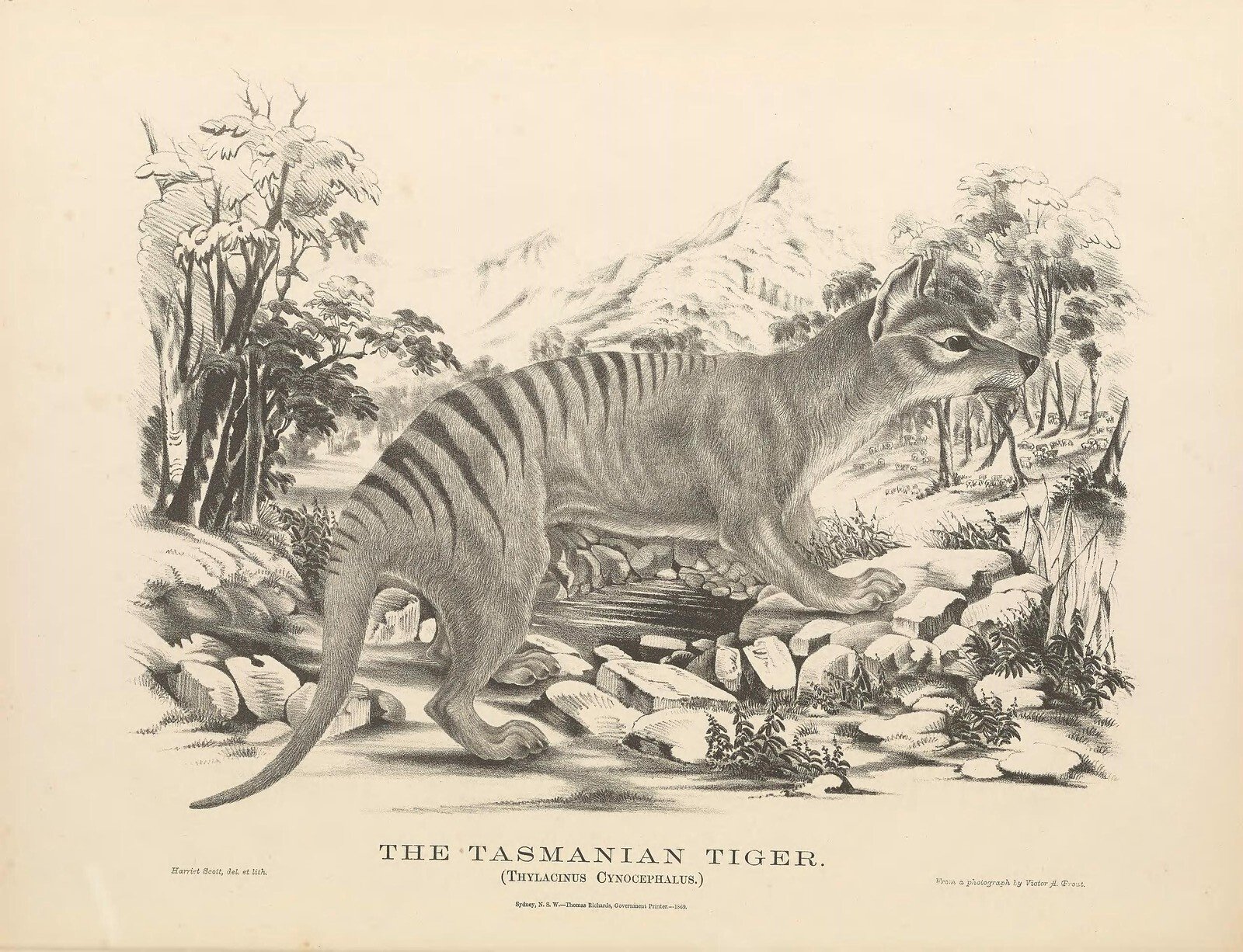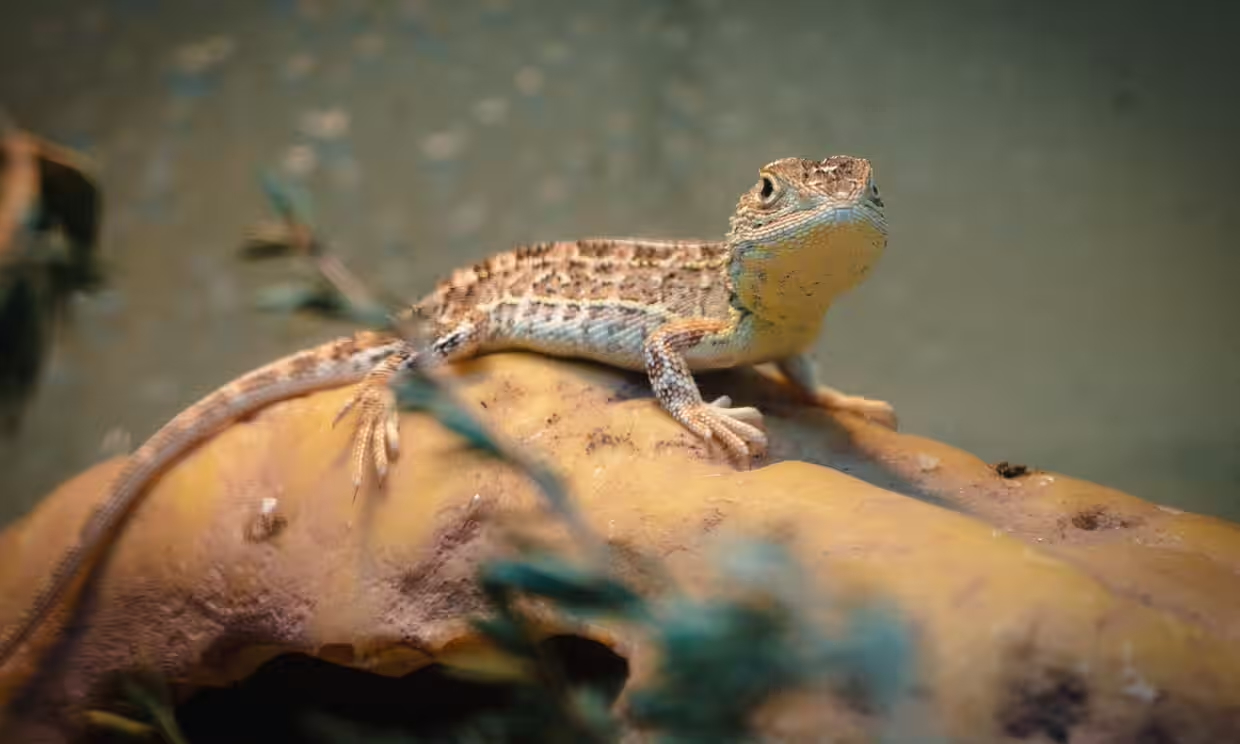This story was originally published by The Guardian and appears here as part of the Climate Desk collaboration.
A U.S. biotechnology “de-extinction” company behind efforts to bring the Tasmanian tiger, woolly mammoth and dodo back from the dead is backing a project to save a tiny Australian dragon.
The support from Colossal Biosciences for a project to restore the Victorian grassland earless dragon — which was feared extinct before being rediscovered in the wild this year — was announced as the company’s representatives visited Tasmania to speak with officials about their plans and inspect a potential thylacine rewilding site.
Colossal, a Texas-based “breakthrough genetic engineering” company, announced last year it had partnered with the University of Melbourne on a multimillion-dollar bid to bring back the thylacine, a marsupial also known as the Tasmanian tiger. The last known thylacine died in captivity in 1936 and it was declared extinct in the 1980s.
Colossal said it had committed nearly $300,000 to a Zoos Victoria program to save the critically endangered dragon, which had not been seen since 1969 until a chance sighting in the wild earlier this year. It said it would help build a quarantined breeding centre at the Melbourne Zoo and work on sequencing the species’ genome and mapping its genetic relationship with related species.
The dragon, a 15-centimetre lizard that lacks an external ear or functional eardrum, was once common in native grasslands west of Melbourne before its population slumped due to habitat loss and predation by introduced foxes and feral cats.
Colossal’s chief animal officer, Matt James, said it was the first species to receive support through the company’s “lost species initiative” to protect threatened wildlife. “We’re starting to leverage some of the cutting-edge technologies that Colossal has built towards a partnership with zoos and governments in order to protect endangered species,” he said.
Colossal has made global headlines and sparked a fierce debate among scientists with its plans to bring back long-extinct species and reintroduce them to the wild. It said it expected to recreate the woolly mammoth — which died out about 10,000 years ago — by 2028 and return it to the Arctic tundra. This year, it expanded its plans to revive the dodo, a Mauritian bird last seen in the 17th century.

Some biologists have argued that millions spent on questionable de-extinction projects would be better dedicated to saving the growing number of species at risk of being lost. Colossal says both goals are important and that the development of genetic techniques to bring species back can help the response to a worsening extinction crisis.
Its Tasmanian tiger project aims to turn stem cells from a living species with similar DNA, the fat-tailed dunnart, into “thylacine” cells — or the closest approximation possible. New reproductive technologies would then be needed to use the stem cells to make embryos.
A team from Colossal and the University of Melbourne working on the project visited Tasmania recently to look at properties in the state’s central highlands where thylacines could be reintroduced to the wild in controlled conditions if the lab-based part of the project was a success. They also met with a group of community stakeholders to discuss what the project involved and answer questions.
Speaking from Hobart, Ben Lamm, Colossal’s chief executive and co-founder, and Prof. Andrew Pask, who heads the Melbourne thylacine genetic restoration lab, declined to put a date on when the animal may be brought back but said the research was progressing at least in line with expectations a year ago, if not better. Lamm said they had started building the committee of stakeholders via Zoom two years ago “and it was great to finally meet them in person.”
“We need to make sure that we take into account the cultural and social implications of long-term rewilding of the thylacine to the Tasmanian people, ranging from government to private landowners to Aboriginal leaders,” Lamm said.
The stakeholders’ meeting was chaired by Michelle Dracoulis, the mayor of the Derwent Valley council. She said the project “sounds like nonsense on the surface” but was compelling once people dug into the details.
“I’m fairly confident it’s going to happen. They’ve got the money behind them and they’ve got the technology behind them,” she said. “The rollout will depend on how the community feels about this and the government feels about this, but I do believe the species will be brought back and it could have a positive impact on the environment.”






Comments